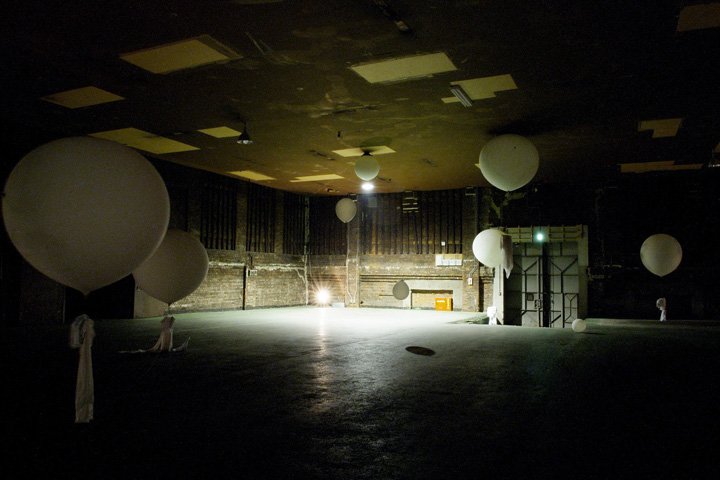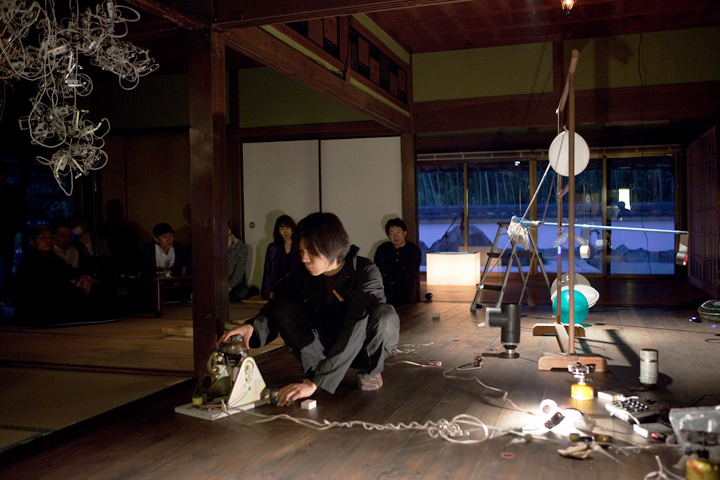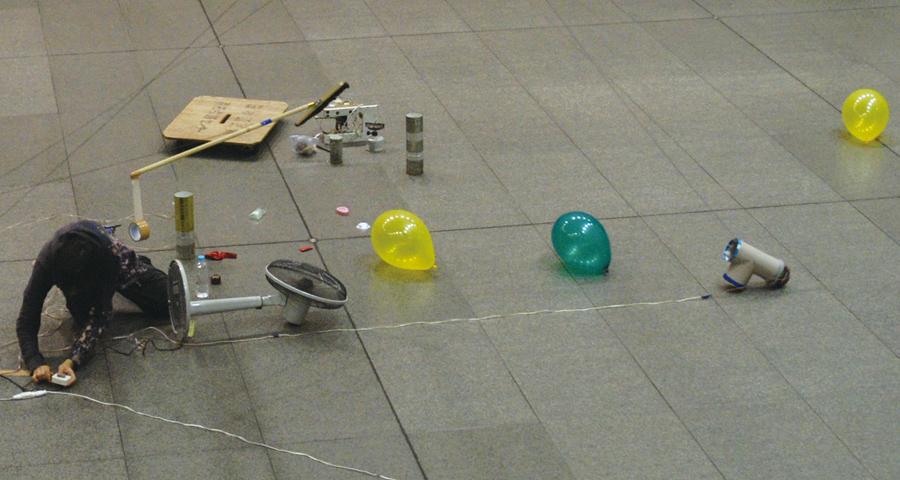





Umeda stayed at the JCVA in December of 2007. The JCVA linked him to the BLURRR Biennial of Performance Art in Tel Aviv, where he participated with a piece called Kamadaik. He also heard the experimental electronic music show of the German group, Faust. During his tour of the Old City of Jerusalem, he found the Church of the Holy Sepulcher particularly inspirational, and made sound recordings there which will undoubtedly serve him in his future work.
In Kamadaik, Umeda gives new form and meaning to an ancient Shinto ritual used for divination. This ceremony involved pouring rice grains into heated vessels called narikama in the hope that the vessel will emit a difficult to obtain sound. In the past, the Shinto oracle attempted to generate the sound as a blessing for the supplicant. In the performance, Umeda recreates the narikama with ordinary tin cans, which he attaches to one another to create a long tube and places on burners. He first pours water into these tubes, and follows by pouring rice grains onto a wire mesh installed inside. His handmade narikama, like the revered Shinto vessels, will only emit their longed-for sound under unique, hard-to-generate circumstances: a 100 degree difference between the lower and upper part of the vessel. In the performance, two other loci generate or transform sound, as Umeda actively and continuously influences the heat and air flow in the space in an attempt to control the temperature. The performance thus reenacts and renews the historical, religious, quintessentially Japanese practice, turning it into a contemporary ceremony wherein the audience waits expectantly for the miracle produced under Umeda's hands.
| Narigam |
In this work, shown at the Beyond Innocence Festival for experimental music in Japan, Umeda poured water and rice grains into metal pipes placed on heaters. This simple action produced cavernous, church organ-like sounds, and gave the exhibition space a strong, uncanny feeling. The initially familiar sound, which amplifies over the course of the piece and enters the viewers/listeners, has a compelling effect on participants' moods. |
| Kehai |
The title of this piece, which was put on during INSTAL, an underground music event in Glasgow, Scotland, means "mood." Here Umeda placed small fans next to balloons filled with helium and air in a long, low-lit corridor. The balloons float and fall in a quiet medium of unfamiliar, discordant, metallic sound, an electronically produced translation of the surrounding sound. The sound is generated by a unique digital process of Umeda's own making, which eerily transforms and harmonize with other sound events in the space. "The sounds I make do not come from an instrument," Umeda says. He suggests that the sounds, being unfamiliar, must in fact be imagined by every listener, and each person experiences them differently. |